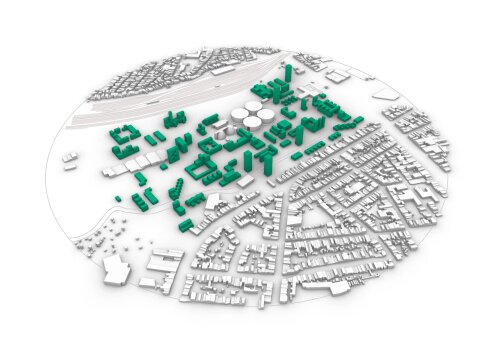Click here to enter our Mural board for May 18th 'retrofitter' workshop.

Climate change, and the objective to substantially reduce CO2 emissions, forces us to rethink the design our cities and buildings. A carbon-neutral economy in 2050 is the target, whilst 30 years is longer than the average lifespan of most building (parts).
Technology can be of great assistance when rethinking our ways of dwelling. In this one-year research project, three departments of the University of Antwerp will research how digital technologies can provide real estate developers, policymakers and other stakeholder with insights on the impact-neutral design of districts.
- The Design Sciences Hub will develop a parametric tool that enables the automated generation of different spatial scenarios. Based on energy scans at district level and state-of-the-art innovative systems, like neighbourhood batteries or smart meters, the tool will yield optimal configurations of infrastructures and buildings.
- IDLab Antwerp's proper machine learning algorithm will look for, and suggest reference images that match the said spatial solutions, based on existing data. This second step renders the spatial solutions developed by DSH more insightful to a broad audience of end users.
- The surroundings of the said configuration, will be mapped by EMIB, analysing the energetic performance of the neighbourhood, and its assets and requirements.
These three tracks will be combined into one tool, of which a first prototype will be developed in this project. The prototype will be applied to one specific use case (Antwerpen-Oost) to evaluate its impact.
Although the project will be lead and executed by the University of Antwerp, the private industry is involved as well. Four real estate partners - Bopro, Immogra, Quares and Vooruitzicht - are financing and steering this project. So is the Beacon, maximizing the insights from digital technology companies.




